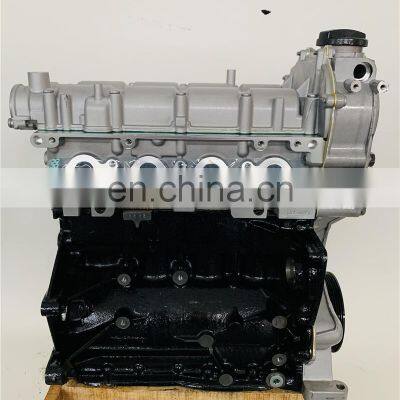Prolong the lifespan of your clp engine with regular care.
Prolong the lifespan of your clp engine with regular care.
Blog Article
How a Clp Engine Can Boost Effectiveness in Numerous Industries
The development of CLP engines marks a substantial shift in operational efficiency throughout various industries, driven by their ability to enhance gas usage and decrease downtime. Industries such as manufacturing and logistics stand to get significantly from their durable design and regular power output, which guarantee to streamline operations and boost productivity. As organizations significantly prioritize sustainability together with performance, the role of CLP engines comes to be a lot more essential. What remains to be seen is how these improvements will certainly shape the future landscape of industrial procedures and their effect on broader financial fads (clp engine).
Overview of CLP Engines
CLP engines, or Continuous Fluid Propellant engines, stand for a substantial advancement in propulsion technology, specifically for area applications. These engines use a continuous feed system that allows for the continual expulsion of propellant, causing improved efficiency and performance compared to typical strong or hybrid propulsion systems. By maintaining a consistent circulation of liquid propellant, CLP engines can attain a lot more accurate thrust control, which is essential for maneuvering spacecraft in different mission circumstances.
The style of CLP engines integrates innovative materials and cutting-edge fuel management systems. clp engine. This leads to decreased weight and raised dependability, important variables for long-duration area goals. Moreover, the constant operation lessens the risk of burning instability, a common difficulty in standard rocket engines.

Benefits in Production
The production of Constant Liquid Propellant (CLP) engines provides a number of remarkable benefits that boost both performance and cost-effectiveness. Among the main benefits is the streamlined manufacturing procedure, which lowers the complexity associated with traditional propulsion systems. By making use of fluid propellant, makers can accomplish greater accuracy in engine efficiency, causing enhanced power result and minimized waste.
Furthermore, CLP engines help with a greater level of modularity, enabling less complicated combination into numerous manufacturing lines. This adaptability can significantly decrease lead times and enhance total operational flexibility. Making use of CLP innovation also often tends to lessen the need for considerable upkeep due to less moving components, which equates right into minimized downtime and operational expenses.

Applications in Logistics
Leveraging Continuous Liquid Propellant (CLP) engines in logistics provides considerable advantages in operational efficiency and reliability. These engines offer a robust service for different transportation needs, enabling the seamless movement of goods across large distances. The fundamental style of CLP engines permits consistent power output, which translates into smoother and more foreseeable transport timetables.
Among the crucial applications of CLP engines in logistics remains in durable products transportation, where they can drive both ground and aerial cars. Their ability to maintain high performance under varying lots problems makes sure that distribution timelines are satisfied, therefore enhancing customer fulfillment. Furthermore, CLP engines can be incorporated into automated logistics systems, assisting in real-time tracking and enhancing route preparation.
Additionally, the longevity of CLP engines lowers maintenance downtime, allowing logistics companies to maximize their functional capacities. This is especially advantageous in warehousing operations, where performance in taking care of and delivering products is crucial. As logistics continues to develop, the integration of CLP engines stands for a forward-thinking method that not just enhances performance yet likewise supports the sector's growing needs for dependability and speed.
Effect On Energy Effectiveness
Just How do Constant Fluid Propellant (CLP) engines improve power effectiveness in transport? CLP engines utilize a regular flow of fluid fuel, enhancing burning processes and preserving a stable drive output. This style decreases energy losses site here connected with conventional burning engines, where fuel shipment can differ and lead to ineffectiveness.
The continual operation of CLP engines permits a more effective thermal cycle, resulting in higher details impulse compared to standard engines. clp engine. This converts to decreased gas consumption for the exact same amount of work done, dramatically reducing functional expenses throughout find more information different transportation fields, including air travel and maritime markets
Moreover, the capacity of CLP engines to maintain optimal efficiency under varying load conditions lowers the requirement for frequent velocity and deceleration, even more enhancing fuel effectiveness. Enhanced energy effectiveness not only adds to set you back financial savings yet likewise brings about decrease greenhouse gas exhausts, straightening with international sustainability objectives.
Future Trends and Innovations
Emerging improvements in Constant Liquid Propellant (CLP) engine innovation guarantee to reinvent the landscape of transportation efficiency and sustainability. As industries pivot toward greener choices, CLP engines stand at the center, incorporating ingenious materials and layout techniques that enhance performance while decreasing environmental impact.
Among the most encouraging trends is the fostering of hybrid systems that combine CLP engines with renewable resource sources. This harmony can enhance gas consumption and reduce exhausts, lining up with worldwide sustainability objectives. In addition, improvements in computational fluid characteristics (CFD) are assisting in the design of even more aerodynamically effective engines, leading to lowered drag and enhanced gas effectiveness.
In addition, the advancement of clever tracking systems is readied to boost operational performances. These systems leverage information analytics and IoT technology to enhance engine efficiency in real-time, guaranteeing that the engines run within their most efficient specifications.
As study remains to check out different propellant formulas-- such as biofuels and synthetic gas-- the future of CLP engines looks promising. By utilizing these technologies, industries can not only boost their performance but likewise add significantly to a cleaner, much more lasting future in transport.
Conclusion
In final thought, CLP engines represent her explanation a considerable improvement in performance throughout several sectors. The assimilation of innovative products and fewer moving parts minimizes maintenance needs, while placement with sustainability objectives placements CLP engines as a pivotal innovation for the future.
Report this page